Prince Valiant
Brief Synopsis
Cast & Crew
Henry Hathaway
Robert Wagner
James Mason
Janet Leigh
Debra Paget
Sterling Hayden
Film Details
Technical Specs

Synopsis
In the time of King Arthur, a group of Vikings led by Sligon betray the Christian king of Scandia, Aguar, and steal his throne, which forces him to flee to Britain. With his wife and impetuous, athletic son Valiant, Aguar lives in a secluded abbey, the location of which is known only to Arthur and Boltar, Aguar's closest friend. One day, Boltar arrives with news that Sligon is intensifying his efforts to find the exiles, and so Aguar orders Valiant to travel to King Athur's court at Camelot and become a Knight of the Round Table. During the journey, Valiant spies upon a knight dressed in black armor as he meets with a group of Viking warriors. The Vikings promise the Black Knight that if he delivers the exiles, Sligon will send him 1,000 armed men, but their parlay is interrupted when Valiant falls from the cliff onto the beach where they are meeting. Valiant steals the horse of the Black Knight's squire and escapes, then, when he hears another rider coming, knocks the man off his horse for fear that he is allied with the Black Knight. The rider quickly overpowers the youth and reveals that he is Sir Gawain, whom Aguar had told Valiant to trust. When Valiant informs Gawain of what he has seen, the knight takes him to Camelot, where Valiant relates his story to Arthur. Many of the knights at the table are skeptical of Valiant's tale, as the Black Knight is considered a non-existent phantom, but the grateful Arthur offers Valiant a reward. Valiant asks to be knighted, to which Arthur replies that he must first become a squire and earn his knighthood. Although the erudite Sir Brack, Arthur's illegitimate brother, offers to train Valiant, Arthur offers the Viking to Gawain, and Gawain cheerfully begins instructing him in the use of the joust, axe and sword. One day, Brack announces that he is going to search for the Black Knight, and Valiant sneaks away to help. Although Aguar had cautioned Valiant not to tell anyone their location, Brack is able to deduce where Valiant came from when he shows him where he saw the Black Knight. Brack then tells Valiant to wait alone while he investigates farther afield, and Valiant is set upon by a dozen archers. Valiant is shot in the back as he escapes, and after falling from his horse, crawls to a lake, where sisters Aleta and Ilene are bathing. They take him to their home, where their father, King Luke of Ord, grows disgruntled by the amount of time Aleta spends nursing the Viking back to health. Luke, who wants Aleta to marry Brack, orders her to stay away from Valiant, but by the time Valiant is able to walk, the young couple has fallen in love. Brack, who desires Aleta, arrives and claims that he had searched for Valiant but could not find him until now. When Brack decides that Valiant is well enough to return to Camelot, Aleta, desperate to spend time with her sweetheart, suggests that the family accompany them to attend the yearly tournament. Upon arriving at Camelot, Valiant learns that Gawain, while searching for him, was seriously injured by the same archers who attacked him. Valiant pleads with Gawain to forgive his earlier desertion, and the gruff knight agrees, although he sternly disputes Valiant's theory that Brack is the Black Knight. Valiant then introduces Gawain to Ilene, who has been infatuated with the knight for years without his knowledge, and rushes to find Aleta. Aleta enters Gawain's chamber alone, and after falling in love with her at first sight, Gawain mistakenly believes that Ilene is Valiant's sweetheart. Valiant, who has been warned that Gawain is more seriously injured than he believes, does not have the heart to correct his hero's mistake, and so avoids Aleta for the next three days. Aleta assumes that Valiant does not really love her, and on the day of the tournament, confronts him. Valiant refuses to speak in his defense, and after tearing off the cross he gave her, Aleta joins her father. Luke announces that the winner of the tournament will receive Aleta's hand in marriage, and Aleta watches in horror as Brack easily clears the field of his opponents during the jousting. It appears that Brack will win until suddenly Gawain appears, but after Brack unseats him, his helmet is removed and the onlookers gasp as Valiant is revealed. The disgraced squire is hurried off the field, while another challenger appears and succeeds in defeating Brack. The challenger is revealed to be the real Gawain, who collapses after his victory. In his tent, Brack receives word that Aguar and his queen have been captured and is given Aguar's ring, which Aguar had promised to send to Valiant if he was needed. When Valiant is brought before Arthur for the crime of impersonating a knight, Brack arranges for him to be confined to quarters while awaiting Gawain's recovery. Valiant pledges not to flee, but when Brack later tosses the ring into his room, Valiant is forced to leave. Aleta sees Valiant preparing his horse, and after begging him not to break his vow to Arthur, swears her undying love. As Valiant is journeying to his home, he is attacked by the Black Knight and his men, who are then met by their Viking cohorts. Valiant is not surprised when Brack reveals himself to be the traitorous knight, but is infuriated to learn that his parents have already been captured, and that Brack intends to dethrone Arthur. Aleta, who has followed Valiant, is also captured, and the couple are taken to Scandia, where Valiant refuses to tell Sligon the names of other Christian Vikings. While Valiant and Aleta are taken to the dungeon, Boltar meets with other loyal Vikings and urges them to take action, even though they are outnumbered. Boltar plans to kill Sligon and then signal his compatriots to storm the castle, but by the time he reaches the castle, Valiant has escaped, and Boltar is unable to get close enough to Sligon to kill him. The Christian Vikings mistakenly believe that the burning torch Valiant thrusts at a pursuer is the attack signal, and soon an immense battle rages around the castle. Valiant succeeds in killing Sligon, and the Christians triumph over the traitors. Later, Valiant returns to Camelot, where he accuses Brack of being the Black Knight. Brack refuses to answer the charges and instead asks for a trial by combat, and although Gawain offers to fight in Valiant's place, Valiant insists on fighting the more experienced Brack himself. After a prolonged sword battle, Valiant kills Brack, and then tells Gawain that he has brought Aleta back for him. Gawain laughingly explains that Ilene has told him the truth and that they have fallen in love. With a proud Aleta looking on, Valiant is then rewarded for his bravery by Arthur, who knights him with the sword Excalibur.

Director

Henry Hathaway
Cast

Robert Wagner

James Mason

Janet Leigh
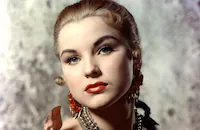
Debra Paget

Sterling Hayden

Victor Mclaglen
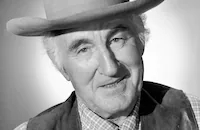
Donald Crisp
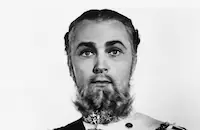
Brian Aherne
Barry Jones
Mary Philips
Howard Wendell
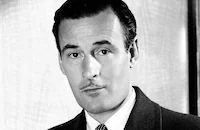
Tom Conway
Jarma Lewis
Primo Carnera
Basil Ruysdael
Sammy Ogg

Neville Brand
Ben Wright
Robert Adler
Ray Spiker
Fortune Gordien
Percival Vivian

Don Megowan
Richard Webb
John Dierkes
Carleton Young
John Davidson
Tudor Owen
Hal Baylor
Mickey Simpson
Eugene Roth
Robert Cunningham
Ashley Cowan

Michael Rennie
Otto Waldis
Lloyd Ahern Jr.
Lou Nova
Chris Alcaide
Larry Chance
Roy Page
Tom Hennessy
Bill Radovitch
Hank Metheny
Tony Linehan
Bob Simpson
Fred Snyder
Joe Collins
Jack Finley
John David
George Bruggeman
Ted Wilkus
Blackie Whiteford
Eva Novak
Ann Luther
Arline Pretty
Myna Cunard
Ted Doner
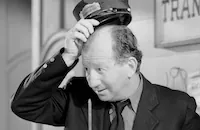
Hank Mann
Heinie Conklin
Crew
Lucien Ballard
George Barrows
Joseph C. Behm
Dr. Sergei Bertensson
Dr. Sergei Bertensson
Loren Brown
Alfred Bruzlin
Bill Catching
George Cernak
Charles G. Clarke
Pat Comisky
George Dockstader
Frank Donahue
Leonard Doss
John Eppers
Warren Fiske
Saul Gorss
Michael Granger
Don Greenwood
Hilda Grenier
Roger Heman
Jean Heremans
Slim Hightower
Charles Horvath
Stanley Hough
Clyde Hudkins
John Hudkins
Robert L. Jacks
Leroy Johnson
Billy Jones
Robert Joseph
Ray Kellogg
Fred Kennedy
Mark-lee Kirk
Stubby Kruger
Bert Lebaron
Charles Lemaire
Tom Mcdonough
Dudley Nichols
Ben Nye
Gerd Oswald
Charles Peck
Jack Pennick
Gil Perkins
Harvey Perry
Edward B. Powell
Charlie Regan
Stuart Reiss
Frances Richardson
George Robotham
George Ross
Eddie Saenz
Rube Schaeffer
Walter M. Scott
Dave Sharpe
Herbert Simpson
Jack Sonntag
Paul Stader
Rose Steinberg
Jack Stoney
Richard Talmadge
Louis Tomei
Herbert Travis
Wayne Van Horn
Franz Waxman
Lyle Wheeler
Terry Wilson
Lou Witte

Film Details
Technical Specs

Articles
Prince Valiant - Prince Valiant
Screenwriter Dudley Nichols (Stagecoach [1939], For Whom the Bell Tolls [1943]) wrote the screenplay based on the King Features Syndicate's Prince Valiant comic strip originally created by Harold Foster. First appearing in newspapers in 1937, Foster wrote and illustrated the strip until 1971. Since then Prince Valiant has remained in circulation to this day, having been continued under the hand-picked talents of artists John Cullen Murphy and Gary Gianni.
24-year-old Robert Wagner had joined 20th Century Fox as a contract player at age 18 and been steadily building his career for several years when he made Prince Valiant. The starring role in a high profile film was a great opportunity for the rising star. According to his 2008 autobiography Pieces of My Heart, Wagner had loved the comic strip as a child and was excited to make the film. "I was happy to be working for director Henry Hathaway; I thought the picture was good, and I loved the romance of the subject matter," said Wagner. "I was working with James Mason, another one of my favorite actors, and I thought I was sensational." What Wagner didn't realize at the time was that he would endure a great deal of good-natured ribbing over his role. "If I'd been paying a little more attention," he said, "I would have known something was wrong. Mainly it was the wig. One day Dean Martin visited the set and spent ten minutes talking to me before he realized I wasn't Jane Wyman. Then I sat in a screening with the guys in the studio doing impersonations of the Singing Sword, not to mention me as Prince Valiant. And then I had to listen to jokes about the wig, which I now think made me look more like Louise Brooks than Jane Wyman. And I got upset about the ridicule, so much so that I still have a block about that movie."
According to Robert Wagner's co-star Janet Leigh, her movie star husband at the time, Tony Curtis, had wanted to play Prince Valiant and was disappointed when he lost the role. Leigh, however, was happy to be working with Wagner and described him in her 1984 autobiography There Really Was a Hollywood as "probably one of the nicest human beings in this, or any, city. Well-mannered, straightforward, humorous, eager, he good-naturedly submitted to the indignity of being with the ladies in the hair department every morning to don his Prince Valiant pageboy wig."
Leigh remembered director Henry Hathaway as "an excellent director, a charming host, and a good friend," but he was also someone who "enjoyed being mischievous, goading someone, baiting, to get a reaction." Hathaway often grumbled about having to wait on hair and makeup people to work their magic on Leigh and co-star Debra Paget, according to Leigh, and he could be particularly hard on Robert Wagner. "My deduction," said Leigh, "was that Henry ragged R.J. [Wagner's nickname to friends] a bit much. But on reflection, I decided he was really helping him, protecting him, tugging on every string, pulling out all stops, making him better than he thought he was. Because R.J. was young, relatively inexperienced, and his was the demanding, pivotal role."
Prince Valiant was given a grand premiere at Grauman's Chinese Theatre in Hollywood when it opened in the Spring of 1954. It went on to be a respectable hit with the support of mostly favorable reviews. The New York Times called it a "lively adventure", Variety praised the "imaginative" action and the "dazzling" settings, and Time magazine said, "Producer Robert L. Jacks and Director Henry Hathaway have not only matched the museum-copied look of the well-known Sunday Viking and his cohorts; they have caught the panel's inner mood of stilted boyhood reverie as well."
Producer: Robert L. Jacks
Director: Henry Hathaway
Screenplay: Dudley Nichols (screenplay); Harold Foster (comic strip)
Cinematography: Lucien Ballard
Art Direction: Mark-Lee Kirk, Lyle Wheeler
Music: Franz Waxman
Film Editing: Robert Simpson
Cast: James Mason (Sir Brack), Janet Leigh (Princess Aleta), Robert Wagner (Prince Valiant), Debra Paget (Ilene), Sterling Hayden (Sir Gawain), Victor McLaglen (Boltar), Donald Crisp (King Aguar), Brian Aherne (King Arthur), Barry Jones (King Luke), Mary Philips (Queen).
C-100m.
by Andrea Passafiume

Prince Valiant - Prince Valiant
Quotes
Trivia
Notes
The film begins with an offscreen narrator describing the betrayal of Viking king Aguar at the hands of Sligon, and his subsequent retreat to Britain, where he was sheltered by King Arthur of Camelot. According to a November 1946 Hollywood Reporter news item, the rights to Harold Foster's popular comic strip were first purchased by Eagle-Lion, with Leonard Picker assigned to produce. In May 1952, a M-G-M News article announced that M-G-M was going to make a picture based on the "Prince Valiant" character, which was to be produced by Carey Wilson with a screenplay by Alec Coppel. According to Twentieth Century-Fox publicity, M-G-M's option on the material ran out before the studio could complete a satisfactory screenplay. The rights were then purchased at the behest of producer Robert L. Jacks, who had pursued the project for three years. Studio publicity also reported that the film's costumes, art direction and set direction were all based on Foster's original drawings for the comic strip.
According to January 1953 Hollywood Reporter news items, Twentieth Century-Fox originally intended to film Prince Valiant in 3-D. On April 2, 1953, Hollywood Reporter announced that in addition to Robert Wagner, Robert Newton and Michael Rennie (who does the opening voice-over narration) were under consideration for "top roles." Victor Mature was suspended by the studio for refusing the role of "Sir Gawain," according to a July 8, 1953 Hollywood Reporter news item. Although Hollywood Reporter news items include the following actors in the cast, their appearance in the completed picture has not been confirmed: Clint Dorrington, James Dime, Robert St. Angelo, James Water, Fred Aldrich, Paul Bakanas, Jack Bellin, Guy Buccola, Lloyd B. Dawson, Will Duffy, Milton Freibrun, Philip Herron, Pete Kellett, Bill Sinley, Bill Swing, Tom Gilson, Boyd Ackerman, Clyde Courtright, Chuck Hamilton, Paul Kruger, Bill Wallace, Michael Grace, Whitey Haupt, Mary Carroll, Karl Davis, Nestor Eristoff, Edward Mundy, Fred Fisher, Kit Guard, Jean Gale, Bo-Peep Karlin, Eleanor Moore, Sally Yarnell, Rosemary O'Neill, Robert Henry, John Kennedy, Dorothy Philips, Joe Evans, Ace Hudkins, Alan Pinson, Jack Mather, Bud Cokes, Jimmy Gonzales, Richard Kiser and Stephen Hase. A August 6, 1953 Hollywood Reporter news item reported that "Hap" Henry, Walter Pietila and Jerry Chiat would perform a "sword-diving act" in the picture, but they were not in the viewed print.
According to Hollywood Reporter news items, some location shooting for the picture was done at the Arroya Sequit, Sherwood Forest and the Rowland V. Lee Ranch in the San Fernando Valley of CA. Studio publicity noted that numerous locations in Great Britain were used, including the village of Dornie, Braemar Castle at Aberdeenshire and Eilan Donan Castle at Loch Duich in Scotland; Alnwick Castle, Northumberland and Warwick Castle, Warwickshire in England; and Caernarvon Castle in Wales. A February 1, 1954 Hollywood Reporter news item announced that a musical short of Haydn's "Farewell Symphony," directed by Otto Lang and conducted by Alfred Newman, was being shot to accompany Prince Valiant in theaters, but no other information about the short has been found. In connection with the film's publicity, James Mason left his hand-and footprints in the forecourt of the famed Grauman's Chinese Theatre on March 30, 1954. On November 30, 1953, Hollywood Reporter's "Rambling Reporter" column asserted that "Fox agreed to hold up its release of Prince Valiant till M-G-M had its crack with [the similarly themed] Knights of the Round Table".
Foster's comic strip was also the basis for a 1997 English-language feature filmed in Germany. Directed by Anthony Hickox, the picture, also named Prince Valiant, starred Stephen Moyer and Katherine Heigl.

Miscellaneous Notes
Released in United States Spring April 1954
First starring role for Robert Wagner.
CinemaScope
Released in United States Spring April 1954














